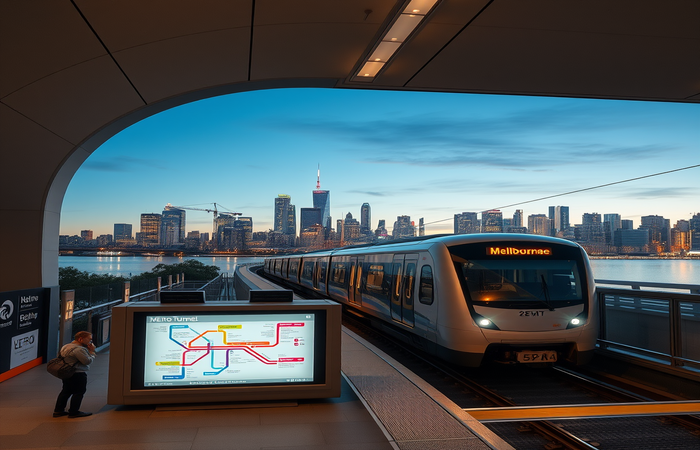Macau LRT Expansion: Seac Pai Van & Hengqin Lines

The recent expansion of Macau’s Light Rapid Transit (LRT) system signifies a significant advancement in the region’s public transportation infrastructure. This article delves into the details of the newly operational Seac Pai Van and Hengqin extension lines, examining their engineering, technological advancements, economic impact, and contribution to sustainable transportation. We will explore the role of Mitsubishi Heavy Industries (MHI) in the project’s execution, the integration of advanced systems like automated guideway transit (AGT), and the broader implications for Macau’s integration with mainland China. The expansion not only addresses growing transportation needs within Macau but also plays a crucial role in facilitating cross-border travel and economic development, showcasing a successful example of modern urban rail development and international collaboration. Furthermore, the article will assess the environmental considerations and the technological sophistication employed in the project, highlighting its potential as a model for future sustainable transit initiatives.
The Seac Pai Van Line: Enhanced Connectivity within Macau
The Seac Pai Van Line, operational since November, represents a significant improvement in Macau’s internal transportation network. The 1.6km extension includes two new stations and an expanded transfer station, significantly improving accessibility to the new large general hospital and facilitating smoother travel between the Macau Peninsula and Taipa Island. This addresses a crucial need for efficient public transportation in a rapidly developing urban environment. The line’s integration with the existing Taipa Line, also delivered by MHI in 2019, ensures a seamless journey for passengers, enhancing the overall efficiency and appeal of the LRT system. This strategic expansion also showcases efficient use of existing infrastructure, maximizing investment returns and minimizing environmental impact through the reuse of existing rolling stock (the 110 cars from the Taipa Line).
The Hengqin Line: Fostering Cross-Border Integration
The Hengqin Line, opened in December 2024, represents a pivotal step in strengthening Macau’s economic ties with mainland China. The 2.2km extension, featuring two new stations, aims to significantly boost cross-border traffic and economic activity. This extension is not merely a transportation project; it is a strategic initiative that supports the overall economic growth strategy for Macau by facilitating seamless movement of people and goods between the two regions. The enhanced connectivity is expected to stimulate trade, tourism, and investment, furthering economic development on both sides of the border. The successful implementation of this line showcases the potential of rail transit in driving regional economic integration.
Technological Advancements and MHI’s Role
Mitsubishi Heavy Industries (MHI) played a central role in delivering both extension lines, showcasing their expertise in Automated Guideway Transit (AGT) systems. Their contribution encompassed the entire AGT system, including signaling, communication systems, power supply, trackwork, platform screen doors, and automated fare collection systems. While MHI did not handle the civil engineering works or station building constructions, their comprehensive involvement in the core technological aspects of the project ensured the efficient and reliable operation of the lines. This highlights the critical role of specialized engineering firms in delivering sophisticated and integrated transportation systems.
Sustainability and Future Expansion
The Macau LRT expansion prioritizes sustainable transportation. The use of electric locomotives and the adoption of advanced technologies like MHI’s ΣSynX (Sigma Syncs) Supervision technology contributes to a lower-carbon footprint. Furthermore, the integration with existing infrastructure, such as the utilization of the Taipa Line’s rolling stock, minimizes the environmental impact of the expansion. The future East Line project, also awarded to MHI, will further expand the network, connecting the Macau Peninsula to the Gongbei border gate, demonstrating a long-term commitment to sustainable and efficient public transportation. This approach aligns with global trends towards eco-friendly urban mobility solutions.
Conclusions
The successful completion and commencement of operations for the Seac Pai Van and Hengqin extension lines represent a significant achievement in Macau’s transportation infrastructure development. The project showcases the effective integration of advanced technology, including automated guideway transit (AGT) systems, and the strategic importance of rail transit in fostering both internal connectivity and cross-border integration. MHI’s pivotal role in delivering the AGT systems highlights the importance of specialized expertise in developing sophisticated and reliable public transportation networks. The focus on sustainability, evident in the use of electric locomotives and the integration of existing infrastructure, positions Macau as a leader in environmentally conscious urban planning. The economic benefits stemming from increased cross-border traffic and improved accessibility are significant and demonstrate the transformative power of well-planned and efficiently executed rail projects. The expansion is not merely an increase in infrastructure; it’s a catalyst for economic growth and enhanced quality of life for Macau’s residents and visitors. Furthermore, the project serves as a model for other regions seeking to develop robust and sustainable public transportation systems that promote both internal connectivity and international integration. The long-term implications of this expansion extend beyond immediate transport needs, creating a foundation for future economic growth and improved urban mobility.




